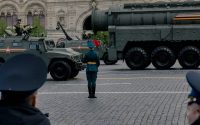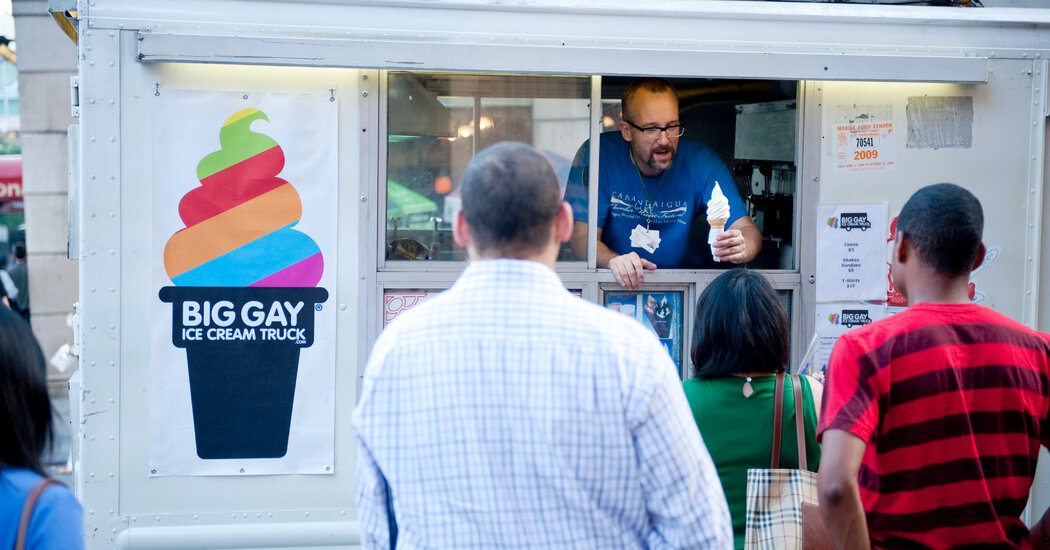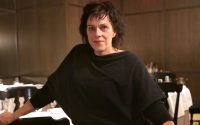Man vs. Musk: A Whistleblower Creates Headaches for Tesla
A day after Lukasz Krupski put out a fire at a Tesla car delivery location in Norway, seriously burning his hands and preventing a disaster, he got an email from Elon Musk.
“Congratulations for saving the day!” Mr. Musk, Tesla’s chief executive, wrote in March 2019.
But what started as a story about a heroic employee and a grateful employer has devolved into an epic battle between the carmaker and Mr. Krupski, a service technician. The fight has spawned lawsuits in Norway and the United States and caught the attention of regulators in several countries.
After initially being hailed as a savior, Mr. Krupski said in an interview with The New York Times, he was harassed, threatened and eventually fired after complaining about what he considered grave safety problems at his workplace near Oslo. Mr. Krupski, originally from Poland, was part of a crew that helped prepare Teslas for buyers but became so frustrated with the company that last year he handed over reams of data from the carmaker’s computer system to Handelsblatt, a German business newspaper.
The data contained lists of Tesla employees, including Mr. Musk, often with their Social Security numbers and other personal information. There were thousands of accident reports and other internal Tesla communications that Handelsblatt used as the basis for stories about flaws with the company’s Autopilot driver-assistance software.
The data also provided the basis for stories by Handelsblatt and Wired magazine about how much trouble Tesla was having manufacturing the Cybertruck pickup, which the company has said will be delivered to customers at the end of this month, almost three years behind schedule. (Some of the information came from a second, unidentified Tesla employee.)
Mr. Krupski said he had gotten access to sensitive data simply by entering search terms in an internal company website, raising questions about how Tesla protected the privacy of thousands of employees and its own secrets.
The Data Protection Authority in the Netherlands, where Tesla has its European headquarters, is investigating whether the breach violated privacy laws. A spokeswoman for the authority confirmed that it was investigating but declined to comment further.
Tesla and three lawyers representing the company did not reply to requests for comment.
In the United States, Benson Pai, a former Tesla production worker, has sued the automaker in federal court in California, claiming that lax security by Tesla exposed employee information that could be sold to criminals. Lawyers for Mr. Pai are seeking approval from a judge to pursue the case as a class action on behalf of tens of thousands of Tesla employees.
Mr. Krupski shared the data with Aaron Greenspan, a prominent Tesla critic and short-seller, who urged him to provide information he had collected about Autopilot to the U.S. National Highway Traffic Safety Administration. The safety agency has had a long-running investigation into the software, which can steer, accelerate and stop a car on its own but requires a driver to be ready to take control at any moment. The agency has interviewed Mr. Krupski several times, he said, an indication that his information was taken seriously.
Mr. Greenspan said he had begun closing out his short positions in Tesla shortly after hearing from Mr. Krupski.
The U.S. safety agency has confirmed that it is investigating whether Autopilot played a role in hundreds of accidents, some fatal, but declined to comment on any interactions with Mr. Krupski. Tesla has maintained that Autopilot makes cars safer and recently prevailed against a lawsuit that had claimed the software was responsible for a fatal crash in California.
Mr. Krupski and Mr. Greenspan also wrote a letter to the Securities and Exchange Commission raising questions about Tesla’s accounting practices, based in part on the data Mr. Krupski had collected. He said he did not know what the commission had done with the information.
The S.E.C. did not respond to a request for comment.
Mr. Krupski remained anonymous until he spoke on the record to Handelsblatt last week.
In the interview with The Times, Mr. Krupski, 38, said he was unemployed and had exhausted his savings. He has served Tesla with formal notice that he intends to sue for compensation, but cannot pursue the case further until he scrapes together enough money to pay a lawyer. Unlike lawyers in the United States, lawyers in Norway are not allowed to work on commission, collecting a share of any award if they win but nothing if they lose.
Tormod Tingstad, an Oslo lawyer, is representing Mr. Krupski free of charge while they try to raise money.
None of this could have been foreseen on March 30, 2019, when Mr. Krupski, who had been hired only a few months earlier, was part of a crew summoned on short notice to prepare Teslas for delivery to customers in Norway, where electric vehicles account for more than 80 percent of new car sales.
Tesla, which sells cars directly to buyers, was using space in an exhibition hall near Oslo to deliver vehicles. Thousands of people were visiting a motor show in the same complex.
Around noon, a charging device that another employee had improperly modified burst into flames beneath a Model 3 sedan. Mr. Krupski yanked the device away and, with his bare hands, pulled out wiring, pipes and other components that were burning and melting. He used rags and towels to suffocate the flames.
“It is fair to say that if it wasn’t for his action, the result would have been a car on fire,” Mr. Krupski’s manager wrote in an email to Mr. Musk the next day. Mr. Krupski said the fire could have spread, endangering workers and customers waiting nearby and forcing evacuation of the motor show.
The only person seriously injured was Mr. Krupski, who was hospitalized with severe burns but has recovered.
After Mr. Musk congratulated Mr. Krupski, the technician replied with complaints about safety practices at Tesla’s Norwegian operation. On the day of the fire, he wrote, there were no fire extinguishers, cardboard boxes and other flammable material were strewn about, and employees were not briefed about where they would be working.
“OK, please let me know if there’s anything we should still do,” Mr. Musk replied, according to a copy of the email included in legal documents prepared by Mr. Tingstad.
But Mr. Krupski’s direct communications with the Tesla chief executive did not sit well with his bosses in Norway. According to Mr. Krupski, his supervisor began questioning his performance and telling him he had no future at Tesla.
“Long story short I am being fired,” Mr. Krupski wrote to Mr. Musk in late April 2019, less than four weeks after the fire. Mr. Musk replied, “I can’t read emails unless critical to Tesla.” That was the end of their correspondence.
In the months that followed, Mr. Krupski said, he was threatened and harassed by co-workers and exiled to a basement. One co-worker threatened to stab him in the back with a screwdriver, he said. Mr. Krupski and other workers were furloughed during the pandemic, and he missed work because of stress-related health problems. Then, in 2022, he was fired after being accused of bad behavior and poor time management, and of being a negative influence.
His bosses also said Mr. Krupski had taken pictures at a Tesla facility in violation of company policy. He said he had taken photos to document safety issues, which included use of a rolling table that employees put under a car when removing a battery. The table was designed to bear a maximum of 500 kilograms (about 1,100 pounds), Mr. Krupski said, while the batteries weighed substantially more. If a table collapsed, he said, workers could be seriously injured or killed.
In a letter to Mr. Krupski’s lawyer, a Norwegian law firm representing Tesla said the company would dispute that he had been subject to retaliation. The letter accused Mr. Krupski of misappropriating company information and threatened to seek damages from him.
Tesla has obtained an injunction from a Norwegian court ordering Mr. Krupski not to distribute any more company information. The court also seized his laptop and turned it over to Tesla. The company notified employees of the data breach on Aug. 18, about three months after it learned that Handelsblatt had the information.
Information including work email addresses, compensation and Social Security numbers might have been leaked, Tesla told employees in an email, but said, “We have no evidence that any personal information was misused or will be used in a manner that could harm you.”
Mr. Krupski said that he had suffered from depression, anxiety and sleeplessness as a result of his battle with Tesla, but that he felt relieved to no longer be anonymous.
“I feel like just by going public I have a new rush of energy,” he said. “I have motivation that, OK, I can maybe start building my life again.”
Noam Scheiber contributed reporting.


